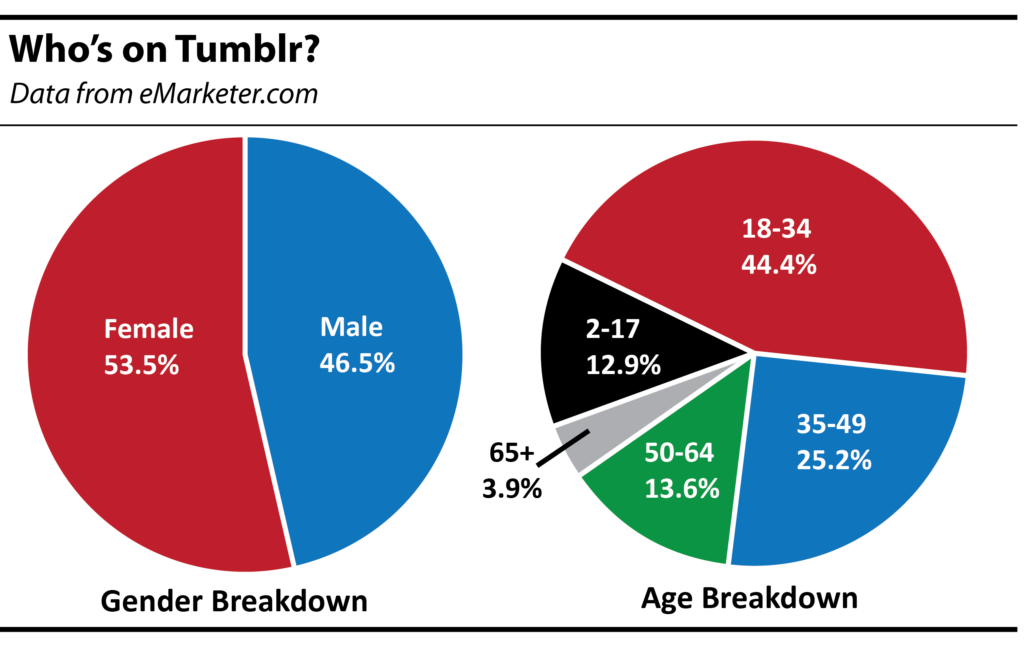I recently spoke at the Chicago Marketing Research Association, hosted at Catalyst Ranch, on social engagement and tactics to generate activity with direct correlation to ROI.
I received a key attendee question that I want to address in more detail.
“Why would a brand want to use Tumblr?”
But Tumblr is old news right? We know a Tumblr site when we see it, and millions publish with the platform on a daily basis. But for many digital marketers, Tumblr remains an elusive quarry. So let’s take a look at the purpose, advantages and brand potential of the burgeoning blogging platform.
Straight from the Source
Tumblr exists to let you “effortlessly share anything” including text, photos links, music and videos using your browser, phone desktop or email. That’s a powerful consumer sell and something we’ve seen a lot of in recent months. The rise of Instagram and Pinterest point to the unfulfilled consumer need to quickly and easily share digital media with friends or find new bits of inspiration.
The User Perspective
Tumblr is incredibly easy to use. Posting content to the platform is a breeze, as is changing the look and feel of your personal Tumblr site. Users don’t need to be developers or familiar with content management systems to extract a lot of value.
Disadvantages
Tumblr isn’t WordPress; you get less flexibility. That’s not necessarily a bad thing because the general rule of thumb with web-based platforms is the more options a user is presented with the greater the learning curve. You’re also unable to self-host with Tumblr. In other words, when people visit your Tumblr page they’re visiting a subdomain of Tumblr, not an owned digital property. The implications for SEO and digital intellectual property are obvious, and that makes the platform less attractive to brands. After all, why invest in a digital asset you can’t own and can’t fully control?
The Brand Perspective
So it’s easy to use and not quite as customizable as WordPress. But how can a company earn Tumblr traffic that converts?
Tumblr is inherently social. Built-in tagging and sharing capabilities encourage users to discover and share new content. Plus, Tumblr functions as its own social network – users can follow their favorite blogs, and everything from that group will appear on the user’s dashboard like a news feed. So Tumblr comes with a built in audience. An obvious perk for brands looking to be more social.
It’s also a multimedia-friendly platform and a great place to show off products, services and (perhaps most relevant to the social web) culture and thought leadership. It’s definitely a B2C play, but that’s not to say that it can’t be creatively integrated into a B2B social media strategy.
Tumblr’s Demographic Breakdown
Which audiences can you expect to reach with Tumblr?
In June 2011 Tumblr surpassed WordPress in the number of blogs posted. In September 2011 Tumblr reported hosting over 29 million blogs.

Have you experimented with Tumblr as part of your B2C or B2B social media strategy? We’re interested to hear about your results.